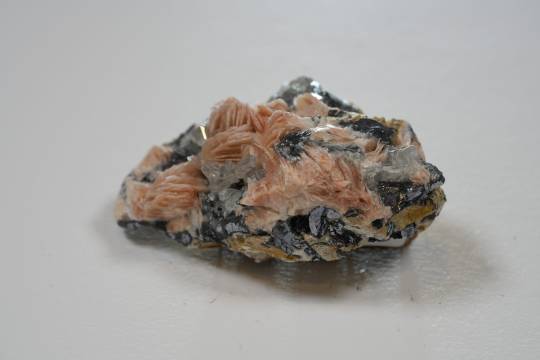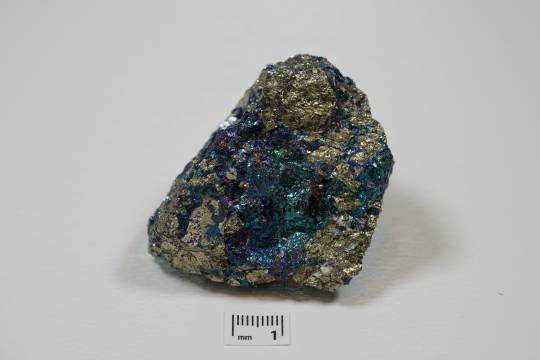#Bornite
Explore tagged Tumblr posts
Text

Natural Peacock iridescent Bornite, pyrite, and Calcite Mineral
Photo: zundicrystal
252 notes
·
View notes
Text

bornite is a bit unnerving
#mega man#mega man classic#megaman#megaman classic#gold man#goldman#bornite#mega man ocs#megaman ocs#mega man oc#megaman oc#is it bold to say bornite will do/xx you for fun? idk maybe#who knows#spins
32 notes
·
View notes
Text


teehee a ych with @cinnabunnsss >v<
top one is bornite(made by cinn) and the bottom one is ametrine(made by me) :D
#land of the lustrous#digital art#your character here#oc art#art collab#ametrine#crystals#bornite#chibi art
4 notes
·
View notes
Text
I finished taking rock photos, hooray! (..it's over with!)
I ended up saving 195 photos. I want to take some good pictures of my fluorescent rocks at some point, but I need to figure out how first. I'm glad now I took the pictures on a huge sheet of paper, because some of my rocks left a lot of dirt or shed a lot of fine crystals (looking at you stibnite)
..Not sure when I'll edit them, or how long it'll take, though. Here's a few of the unedited ones.






#opal#dioptase#cerussite#galena#barite#aquamarine#bornite#chalcanthite#rock collection#mineral collection#rocks#minerals#beeapartments-text
13 notes
·
View notes
Text



My Uni gifted me a magnifying glass. Decided to use it on some minerals from my collection
40 notes
·
View notes
Text





Bornite (Smeeper/Tegyp hybrid) and Buttermilk (Chamilo) what will they do....
#myart#i usually use he/him for bornite but both use any pronouns they dont really care#cosmosdex#fortuna#<- i guess? these guys are just. more cosmosdex than fortuna ocs though
57 notes
·
View notes
Text
2 artists 1 ych!

mines the top one + @f3arful-owo did the bottom :3
#the top one is bornite#the bottom one is ametrine#art#digital drawing#digital art#land of the lustrous#lotl#lotl oc#lotl fanart#houseki no kuni fanart#hnk fanart#hnk oc#hnk ocs#houseki no kuni#artists on tumblr#artists of tumblr#digital artwork#my art
14 notes
·
View notes
Text

new 2024 ref for my hnk oc, Chalco :3
#hnk#houseki no kuni#hnk oc#houseki no kuni oc#my art#my post#chalcopyrite#peacock ore#did you know that bornite tarnishes naturally into peacock ore... and doesnt have dirty ass dust
40 notes
·
View notes
Note
wait no please explain mineral processing!!!
I gasped in delight at the ask, haha. I love mineral processing.
Mineral processing is the theory of economically getting your desired element out of whatever it naturally comes in. So Li out of spodumene, or Cu out of chalcopyrite. It's usually split into hydrometallurgy and pyrometallurgy (liquid chemistry and melting the fuck out of it, respectively), and often taught as hard rock extraction, but you need it for Every Element, really. So you can also focus on extracting phosphates, or nitrates, or uranium! It's chemistry++~
Personally, I know the most about copper extraction and my focus is on hydrometallurgy/geometallurgy, although pyrometallurgy is near to my heart. Copper is coincidentally a really good example of how the two work because it comes as so many natural minerals. (Further explanations under the cut...)
So for copper minerals! You have a whole slew of oxides and sulfides. They occur in different part of your orebodies under different states of oxidation/sulfidation. Take Chrysocolla, Malachite, Chalcocite, and Chalcopyrite. (Cu-silicate)(an oxide), (Cu-carbonate)(an oxide), (Cu-Sulfide), and (Cu-Fe-Sulfide).
Mines usually use hydrometallurgy for oxides by sticking them in a leach heap and pouring sulfuric acid over the whole thing. The acid selectively picks up the Cu ion from silicates and carbonates, leaving the primary tetrahedra alone. The sulfides can work with this chemistry if the mineral's comfort zone is outside of the current conditions (Chalcocite does leach, but usually leaves a Cu ion in the structure as CuS) but minerals like Chalcopyrite are very poor leachers because the outer rim of ions are ripped away, leaving a somewhat-hypothetical "passive layer" of Fe/S that won't react with the acid. So if you have a mine with a lot of Chalcopyrite, you'll be leaving money on the table unless you do something.
So people use pyrometallurgy! Which is what we've been using since the Bronze Age, really. You crush the rock to micrometer grains, use the hydrophobic properties of sulfur to "float" the sulfides in water, then send all of it to the smelter and melt the shit out of it, while adding particular chemicals and minerals to enhance copper recovery while suppressing sulfides you don't want, like sphalerite and galena.
It's REALLY cool. I'm biased of course, but I absolutely love the whole cycle. xD Being in mineral processing also gets you on the backside of geopolitics because you're the only person who understands how to GET things and WHERE to get them and why it's not as simple as pulling Cu out of the ground.
Feel free to ask questions!! I love processing so much, and mining in general, even though I'm only a master's student.
((And NO STUPID QUESTIONS. The mining industry is a goddamn black box DO NOT feel bad if you don't know what stuff means or formulas, or processes. I swear I learn one new word a week. They also have fifty names for everything too because 50 names are always better than 1. 👍)
#Mineral processing is like- the pinnacle of geology in my opinion. I feel so biased saying this! lmfao. I love it though! It's why it#matters if you have Bornite or Chalcopyrite in the ground; or if your ore deposit is in an ophiolite or a porphyry; or if your gold is in a#quartz vein or a fault zone. If your gold is stuck as native in quartz you might not be able to get it out!#To be clear I'm a geologist too. Technically in engineering because that's where this stuff is taught but I identify as Geologist~#mining#mineral processing#geology#I hope I didn't talk too much! I tried to give a good explanation without teaching a class. It's so much info. lol
31 notes
·
View notes
Text
There are two ghouls named Bismuth and Bornite who were in Secondo's pack of ghouls who stayed behind when Secondo died. Unfortunately, Dewdrop doesn't with visit them as often as she should, or wants. He swears he's not avoiding them, but there's a strange guilt she feels about her success in the band and their pack.
7 notes
·
View notes
Text

Big Sister is Watching You.
#bornite#mega man#mega man classic#megaman#megaman classic#megaman ocs#mega man ocs#megaman oc#mega man oc#scopophobia#multiple eyes#bright colors#eye strain#bornite my terrible bird who keeps an eye out on you watching every move you make and every choice you do#bornite and gold attacking each other as bornite taunts gold for how shes the reality of a future that was never truly alligned to him#if he only was a good robot and did what his creator asked of him but symbolism is a bitch and theyre both birds to me#one is caged and clipped to prevent another escape and the other is flying free and safe from their dangers... for now.#anyways im rambling about ocs
34 notes
·
View notes
Note
30, 45 and 49 for weird asks
30. is there dishes in your room?
Not anymore!
45. can you remember what happened yesterday?
A little bit? It was a pretty normal day, I think.
49. can you skip rocks?
I can for like, two skips. Nothing too impressive, I'm no rock-skipping expert. My uncle is, though.
Thanks for the asks! <3
#ngl i thought 49 said ship rocks#i was like 'what does that mean?'#i do think the bornite on my bookshelf has a good dynamic with the quartz on my dresser though
6 notes
·
View notes
Text
Kishiko: Nespina has no idea I’m high.
Nespina: You’re high?
Kishiko: Oh, I’m sorry.
Kishiko, leaning over to Nia: Nespina has no idea I’m high.
0 notes
Text
Y'all know what? Life is
luscious and raw - I refuse
to forget this time.
1 note
·
View note

